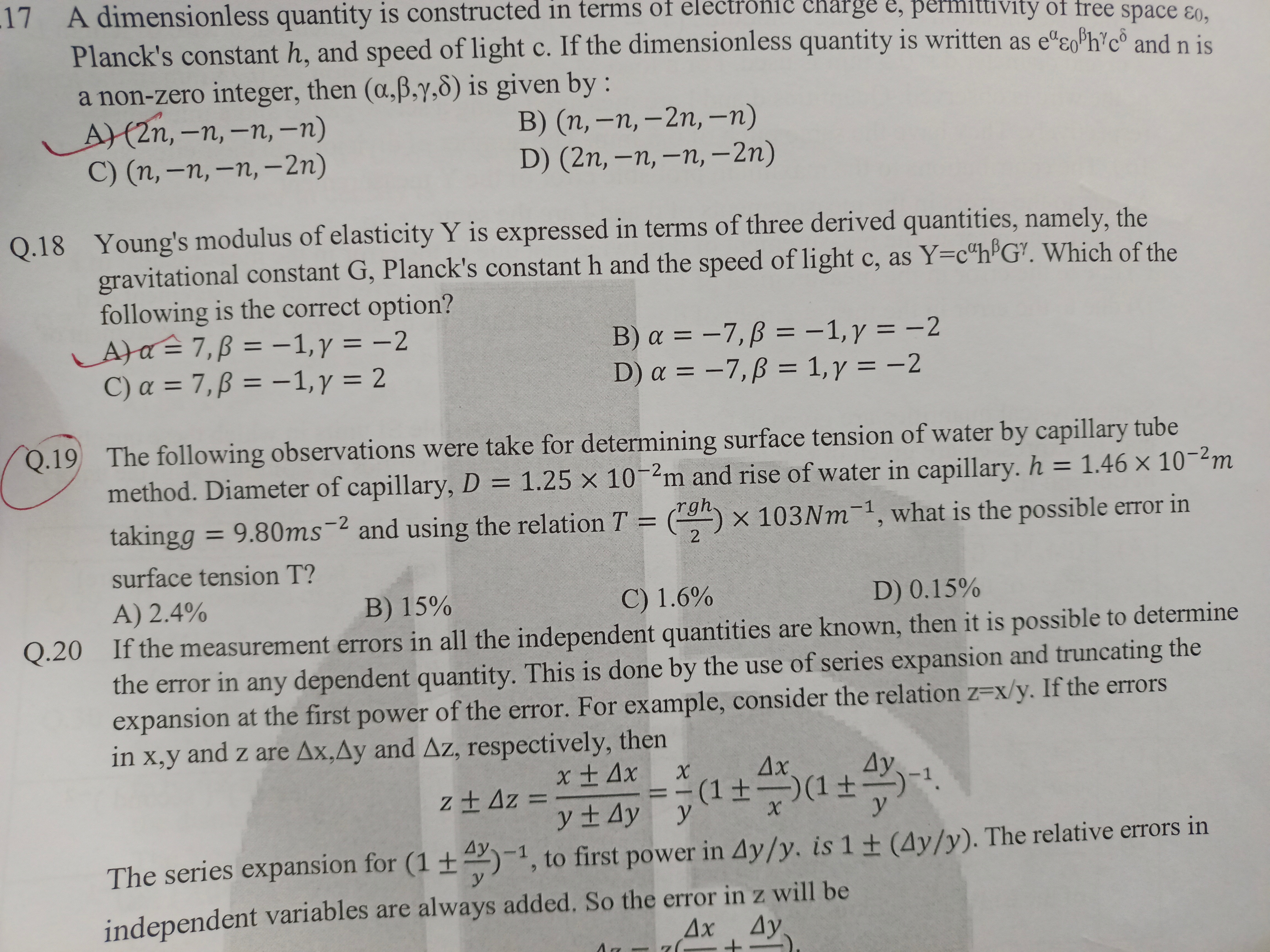Question
Question: A dimensionless quantity is constructed in terms of electronic charge e, permittivity of free space ...
A dimensionless quantity is constructed in terms of electronic charge e, permittivity of free space ϵ0, Planck's constant h, and speed of light c. If the dimensionless quantity is written as eαϵ0βhγcδ and n is a non-zero integer, then (α,β,γ,δ) is given by :

(2n,−n,−n,−n)
(n,−n,−2n,−n)
(n,−n,−n,−2n)
(2n,−n,−n,−2n)
(2n, -n, -n, -n)
Solution
The dimensionless quantity is given by Q=eαϵ0βhγcδ.
The dimensions of the quantities are:
- Electronic charge, e: [IT]
- Permittivity of free space, ϵ0: [M−1L−3T4I2] (from Coulomb's law F=4πϵ01r2q1q2)
- Planck's constant, h: [ML2T−1] (from E=hf)
- Speed of light, c: [LT−1]
For Q to be dimensionless, its dimensions must be [M0L0T0I0].
[Q]=[e]α[ϵ0]β[h]γ[c]δ
[M0L0T0I0]=[IT]α[M−1L−3T4I2]β[ML2T−1]γ[LT−1]δ
[M0L0T0I0]=[M−β+γ][L−3β+2γ+δ][Tα+4β−γ−δ][Iα+2β]
Equating the exponents of M, L, T, and I to zero:
- M: −β+γ=0⟹γ=β
- L: −3β+2γ+δ=0
- T: α+4β−γ−δ=0
- I: α+2β=0⟹α=−2β
Substitute γ=β into the L and T equations:
- L: −3β+2β+δ=0⟹−β+δ=0⟹δ=β
- T: α+4β−β−δ=0⟹α+3β−δ=0
Substitute α=−2β and δ=β into the last equation:
(−2β)+3β−β=0
β−β=0
0=0
This confirms consistency, and we have one free parameter. Let β=−n, where n is a non-zero integer as given in the question.
Then α=−2β=−2(−n)=2n.
γ=β=−n.
δ=β=−n.
Thus, (α,β,γ,δ)=(2n,−n,−n,−n).
